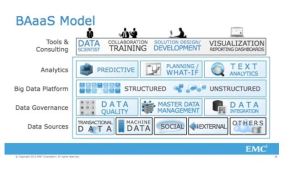For your IT operation to make the most of your organization’s ever-expanding Big Data in today’s information-driven universe, you need to set it free.
I don’t mean free in the sense of relinquishing control of your data and letting it go where it may, but in the sense of opening it up for collaboration with the business in pursuing meaningful analytics and then adding value from the results back into the data.
In fact, data liberation is central to a three-phase Big Data vision and strategy EMC is using to make the most of what our data is telling us.
Consolidate
The first phase is data consolidation—getting your data into a centralized repository with appropriate provisions for a federated model. For this, your data must be logically centralized but not necessarily physically centralized. This should be applied to both structured and unstructured data and accommodate both real-time and batch updates.
Liberate
But data consolidation alone won’t let you get the most out of what it can tell you. For this, you need to liberate your Big Data by allowing the business to start using it as much as possible. In the past, IT organizations were accused of holding the data hostage. And we did in the sense that we, as custodians (but not necessarily owners) of the enterprise data, tended to keep business groups from working with the data directly for fear they would adversely impact its integrity and security.

Now, however, we have the Big Data tools that allow us to open up the data for business use and even offer them help with their analysis via Business-Analytics-as-a-Service (BAaaS).
EMC IT’s BAaaS offers business groups a sandbox or workspace where they can analyze the data sets they choose, as well as bringing in data from other sources. (For more on BAaaS read Business Units Embrace Big Data Analytics.) Utilizing our advanced analytics tools, they can start seeing immediate results and creating their own reports. They can also use IT consulting services, including data scientists, to create more advanced analytics models and interpret results. This collaboration between IT and the business is a crucial step in leveraging Big Data to add value to your organization.
Once analytics efforts yield valuable information, having a centralized database lets you share the results with other business users that may be pursing similar analysis—another benefit from consolidated and liberated data. This avoids wasting time and resources on replicating analytics processes.
Close the Loop
For more advanced analytics, the business and IT can turn to data scientists to find data patterns and trends that can be used to improve business operations. The data scientists supply the advanced modeling expertise, while the business groups provide the domain expertise for their specific area. This is the third phase of our Big Data strategy, effectively closing the loop on the process. With this level of analysis, we move from using our data to only gain hindsight— or why something occurred—to gaining foresight—or using patterns to predict opportunities or occurrences. Data scientists use advanced techniques to generate alerts and reports.
For example, EMC IT has been working with Sales to develop information on which customers are more likely to renew their maintenance contracts to more effectively target our resales efforts. We have also been working with our Global Command Center to help our staff identify user patterns and anomalies to give us advanced warning of IT outages and prepare a response or even head them off before they occur. And we are working on a model that will let Customer Service predict which customer equipment in the field is likely to need maintenance based on performance patterns, opening the door for us to begin working with those customers on equipment refresh before problems arise.
Furthermore, as the Big Data analytics is opened up, our Product Engineers are able to look at product performance in the context of our overall ecosystem instead of segments of information, giving them better guidance on what product improvements are most needed.
These predictive efforts are only the beginning of the business value that can result from finding out what your Big Data is telling you. (Read How EMC Uses Big Data to Deliver Value to the Business.) Using that data and analytics technology effectively will take a new spirit of collaboration between IT and the business and a willingness to more freely share data access. But the potential gains are enormous.
So, go ahead. Consolidate, liberate and close the loop. And see where Big Data analytics can take your organization.